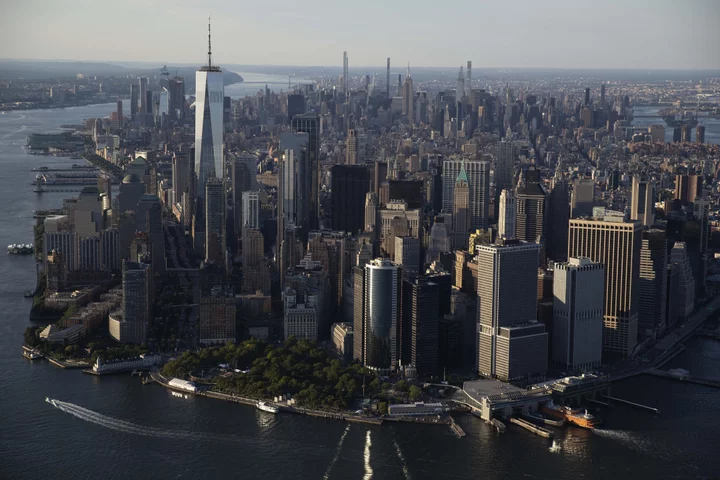New York City could face a cumulative budget gap of $40 billion over the next four years thanks to soaring costs, according to state Comptroller Tom DiNapoli.
That estimate, which exceeds the city’s projected $19.8 billion gap through 2027, may be even higher after Mayor Eric Adams on Wednesday outlined the ballooning costs to shelter and care for tens of thousands of migrants.
Additionally, the expansion of a rental assistance program is creating looming risks to city finances, DiNapoli said in a review released on Thursday of the city’s 2024 adopted budget and financial plan
New York City Faces $12 Billion Expense to Handle Migrant Crisis
Adams estimated that the cost to shelter migrants could reach $12 billion by July 2025.
“We will continue to exercise strong fiscal management and take the steps necessary to balance the budget, as required under the Charter,” said Jonah Allon, an Adams spokesperson. “But we are clear: We need additional support from our state and federal partners.”
The city will release updated estimates of future budget gaps in November.
Last year, the city spent $1.5 billion taking care of migrants sent from Southern border states and elsewhere. Almost 100,000 migrants have arrived since last spring and there are currently more than 57,000 migrants in the city’s care.
Adams has pleaded with President Joe Biden to send more aid, but so far the federal government has only chipped in $135 million.
“The lack of federal policy adjustments and a substantial matching share of funding for managing the asylum seeker influx has created an unsustainable fiscal issue for the city,” DiNapoli said in his report.
The city spends almost $300 million a month to provide food, shelter, medical care and social services to each family seeking asylum, but officials now estimate the costs will grow.
Rental Costs
With attention focused on the migrants, the cost of a major expansion of a city rental assistance program has garnered less notice.
The City Council passed the expansion, aimed at keeping residents in permanent housing instead of homeless shelters, over Adams’ veto. The mayor estimated the change will cost $17 billion over five years, but the city didn’t include that expense in its June financial plan.
Legislation approved by the council in May would raise the eligibility for rental assistance to 50% of area median income — about $63,500 for a family of three — and include tenants who have received a written demand for rent from their landlord or have active cases in housing court.
The city council’s cost estimates range from $7.5 billion to $10.6 billion over five years. Adams has suggested he may take legal action to block the the expansion.
--With assistance from Laura Nahmias.
(Adds quote from city spokesperson in 5th paragraph)
Author: Martin Z. Braun

